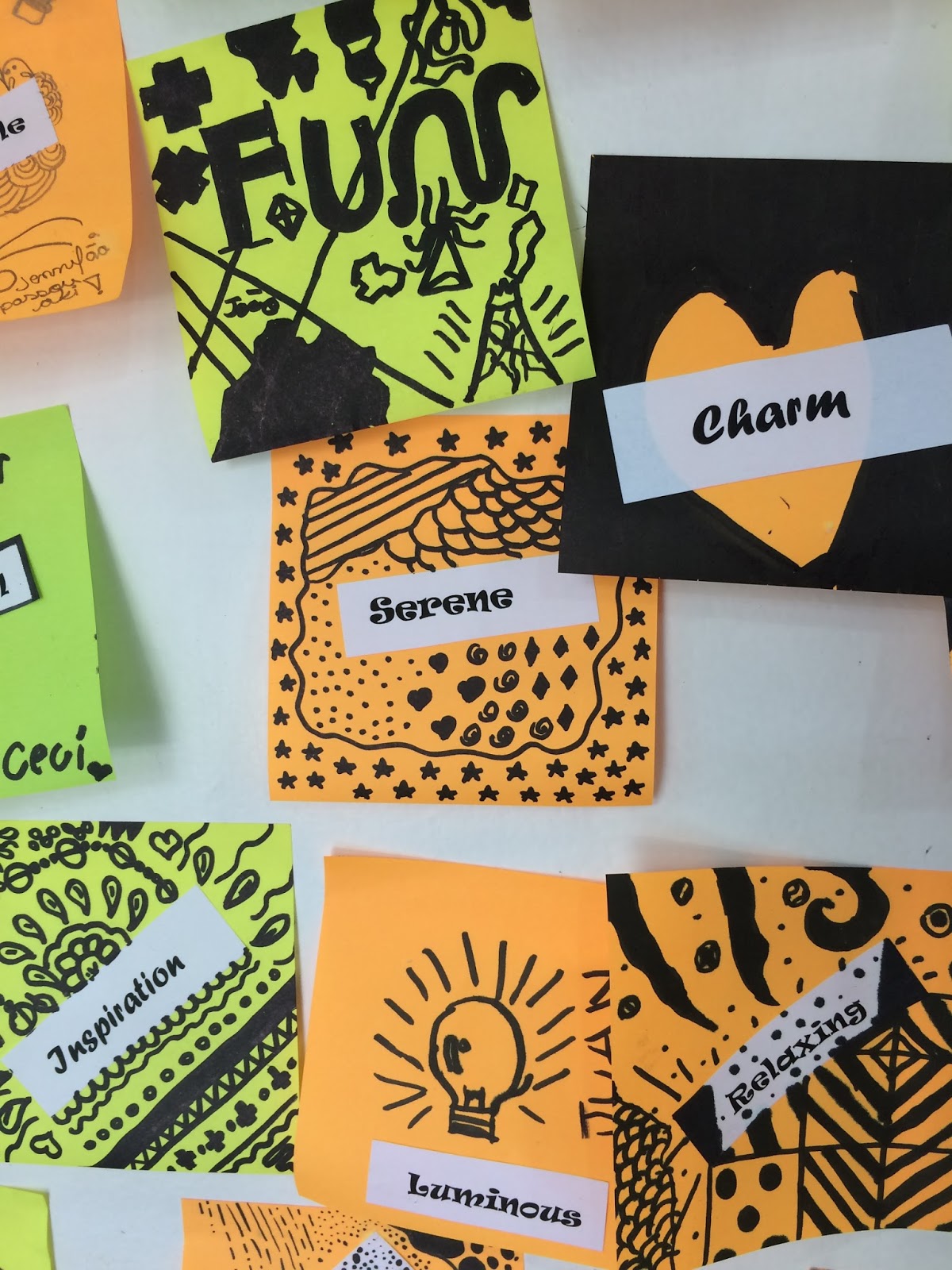Last year, in an effort to make the culture of the maker movement more accessible and more of the norm in the language school where I teach, I set up what I called the Maker Corner in the reception area. I had noticed kids hanging out there, before or after classes, faces glued to their phones, having little or no interaction among themselves. I thought that giving them an opportunity to create something would invite more interaction, and also be one step toward developing a community of creative thinkers, problem-solvers, and collaborators.
I was inspired by the idea of tangle drawings--related to the meditative drawing style of Zentangle ®. Though not directly following this official method, the basic idea is to draw a border (of any shape--precision is not necessary), then draw a "string"--a curved or twisting line that gives a structure. From that structure, one or more "tangles," or patterns, are drawn, filling up the border until the creator is satisfied. There are no mistakes in this kind of drawing, and no skill is required.
I set up a small table with different colored sticky notes on which to draw, and some black drawing pens. I also put out some laminated instructions, some pattern samples and a QR code linked to further information about tangle drawings.
In order to give an English language focus, as well as an idea to meditate on, I provided an array of positive words, on small pieces of paper, for students to choose from and glue to their sticky-note. I tied the scissors and a glue stick, as well as the pens, to the base of the table, in hopes that they wouldn't disappear.
Then I made a few samples, stuck them on the wall, and walked off. And as the days went by, I got to watch it grow!
Not everyone followed the idea of tangle drawings, but many did. Regardless of the form, it was interesting to see creativity spring into action and watch these drawings fill up the wall. Kids (and adults), drawn to this mini-maker space, had the opportunity to share ideas for drawing patterns and learn new vocabulary together (either by explaining unknown words to each other or looking them up on their phones). Other students, coming during a quiet time of day, enjoyed a few meditative moments while working alone. There were definitely some quiet artists that came back day after day to make their mark.
Of course, there were a few naughty drawings that had to be taken down. I suppose that's normal. Overall, however, the wall became a colorful exhibition of collaborative art that reflected the pulse of the school community.
These are a few of my favorites.
So, what did I do with all those sticky notes? After a few weeks, I took them down and carefully stored them. We had this Maker Corner set up in both campuses of the school--in two different neighborhoods. I labeled and saved an envelope containing the work of each one.
The following semester, about halfway through, I took out those envelopes, swapping the work done by each campus so that people could see something new. I selected the most beautiful, most positive and those that were still sticky, and put them on another wall--one in the library maker space, and another in the cafe of the other campus. This time, I put up a sign saying "Take what you need, give what you can," and set up extra sticky notes and pens for people to add to the collection if they wanted.
I thought it was cool how these inspiring words with drawings and patterns got to travel and impact two communities, and beyond. There are many things that can be done with sticky notes, and there are other teachers besides me who have the wild idea that these small pieces of paper, when used wisely, can make the world a better place.
This semester, I am encouraging students who like to doodle during class (there are many of them!) to draw on sticky notes that I provide, and then stick them up in the classroom, so that we can have a collaborative collection of doodles. (Don't worry--I can tell if my students are paying attention or not, and there is research behind doodling assisting in learning!) We'll see what happens over time when, as a class, we capitalize on this constant creative energy.
What are some of your favorite uses for sticky notes? How would you like to capitalize on different kinds of productive energy? Share your stories of creativity and collaboration or just the magic of this fabulous (and surprisingly, accidental!) invention.








Comments